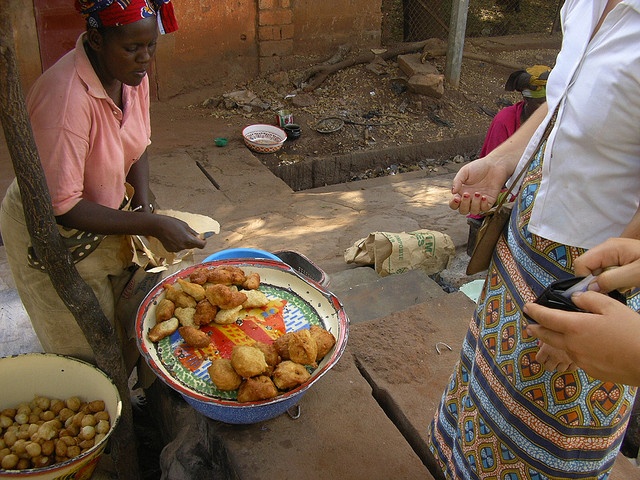Introduction: Mali’s Culinary Culture
Mali is a landlocked country in West Africa with a rich culinary culture that has been influenced by its diverse history and geography. Malian cuisine is known for its bold flavors, hearty stews, and use of grains like millet and sorghum. The country’s nomadic and pastoral traditions have also played a significant role in shaping Malian cuisine.
The Nomadic and Pastoral Roots of Malian Cuisine
Nomadic communities in Mali have relied on livestock for thousands of years, and this has had a significant impact on Malian cuisine. The Tuareg people, for example, are known for their use of camel milk and meat in their cooking, while the Fulani people have a long tradition of dairy farming and cheese-making. These nomadic and pastoral traditions have also influenced the way that Malians cook their food. Grilled and roasted meats, for example, are popular cooking methods in Mali, as they are well-suited to the nomadic lifestyle.
The Role of Millet in Malian Food Traditions
Millet is a staple grain in Malian cuisine, and it has been cultivated in the country for thousands of years. Millet is a hardy crop that can grow in dry conditions, making it an ideal grain for the Sahel region of West Africa. Millet is used to make a variety of dishes in Mali, including porridge, couscous, and a fermented porridge known as tô. Millet is also a key ingredient in bissap, a popular Malian drink made from hibiscus flowers.
Spices and Flavor Profiles in Malian Cooking
Malian cuisine is known for its bold flavors and use of spices. Popular spices in Malian cooking include ginger, cinnamon, and cloves, which are often used in meat stews and rice dishes. Pepper, both black and red, is also used to add heat to dishes. Malian cuisine also makes use of herbs like mint and parsley to add freshness to dishes.
The Significance of Meat in Malian Cuisine
Meat is an important part of Malian cuisine, and it is often used to create hearty stews and grilled dishes. Beef and lamb are popular meats in Mali, but goat and sheep are also commonly eaten. In the northern regions of Mali, camel meat is also consumed. Malian cuisine also makes use of organ meats like liver and kidneys.
Adapting Malian Cuisine for Modern Palates
Malian cuisine has a lot to offer, but it can be challenging for some palates. Traditional Malian dishes can be quite spicy, for example, and the use of organ meats may not appeal to everyone. However, Malian cuisine can be adapted to suit modern tastes. Grilled meats, for example, can be made with chicken or fish instead of beef or lamb. Millet can be used in place of rice or quinoa, and vegetables like eggplant or zucchini can be added to stews to make them more appealing to those who don’t eat meat. Ultimately, the bold flavors and rich history of Malian cuisine make it a culinary tradition worth exploring.

